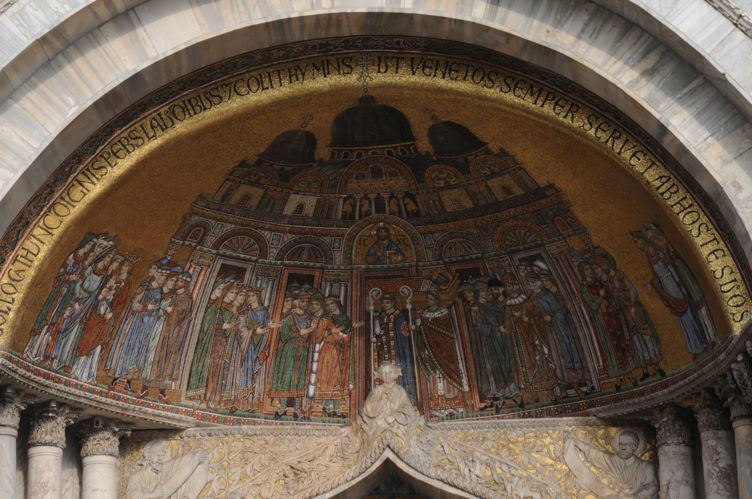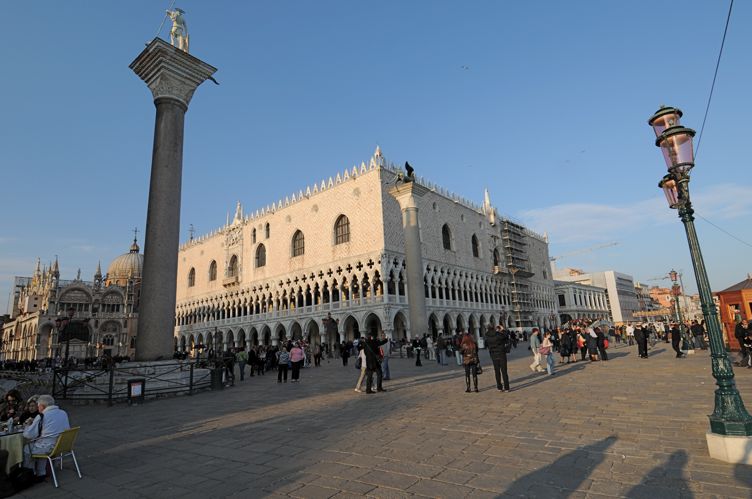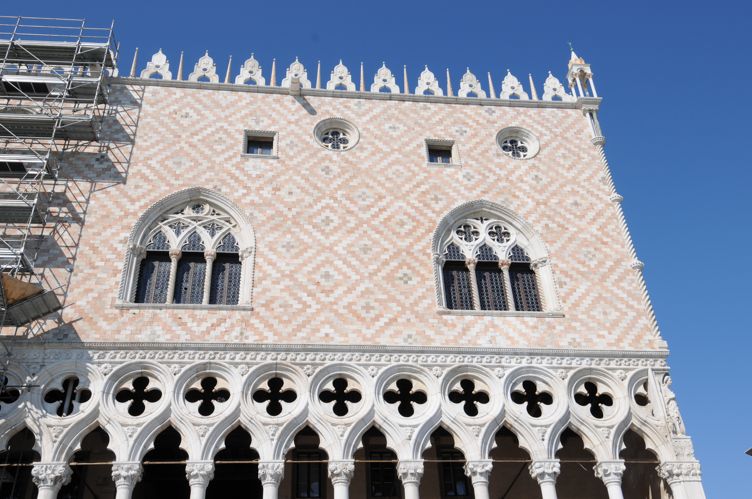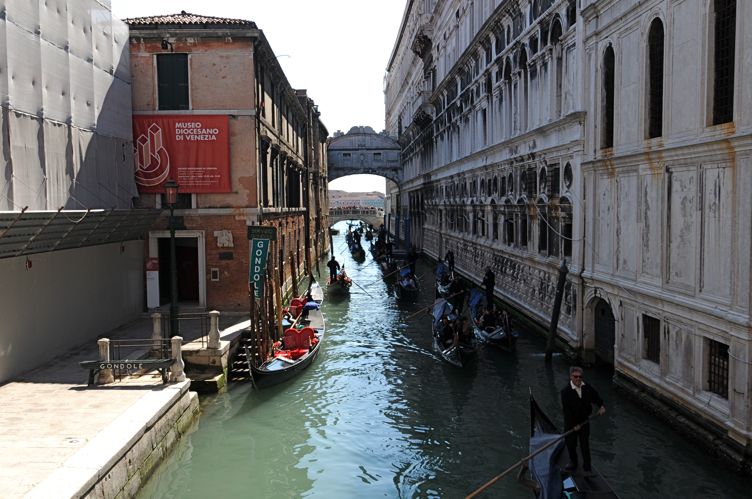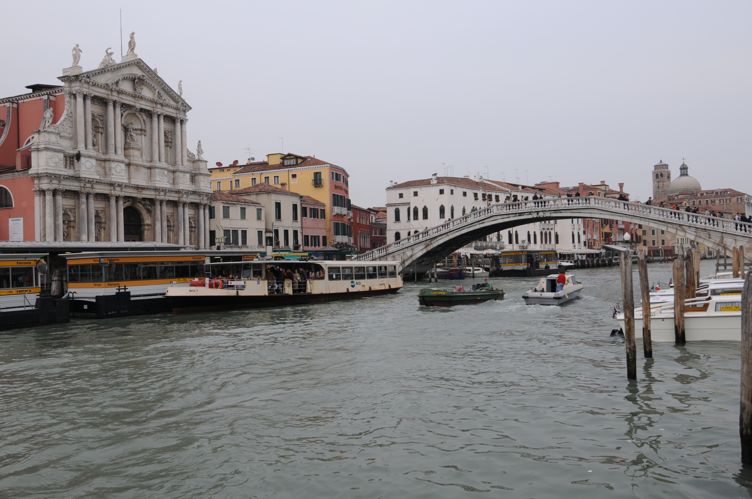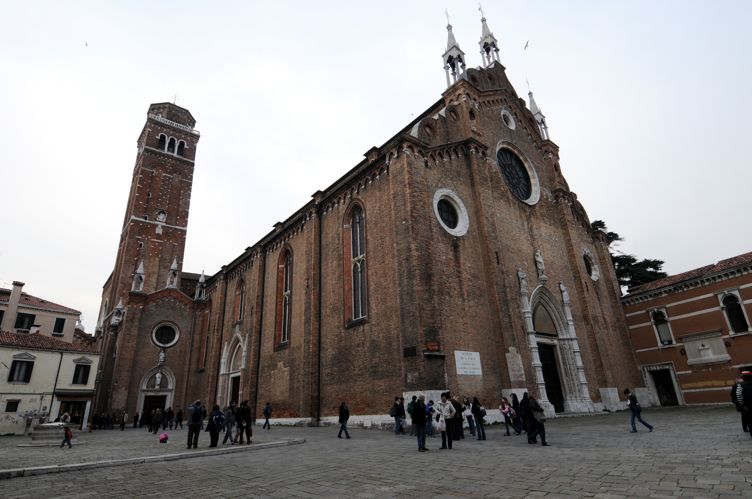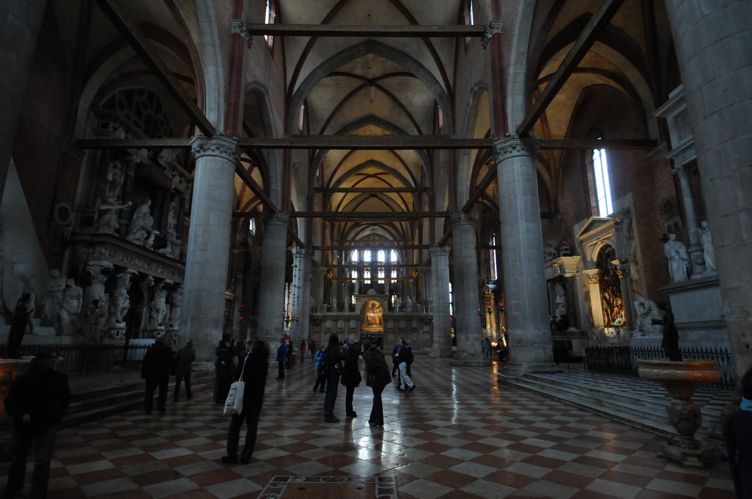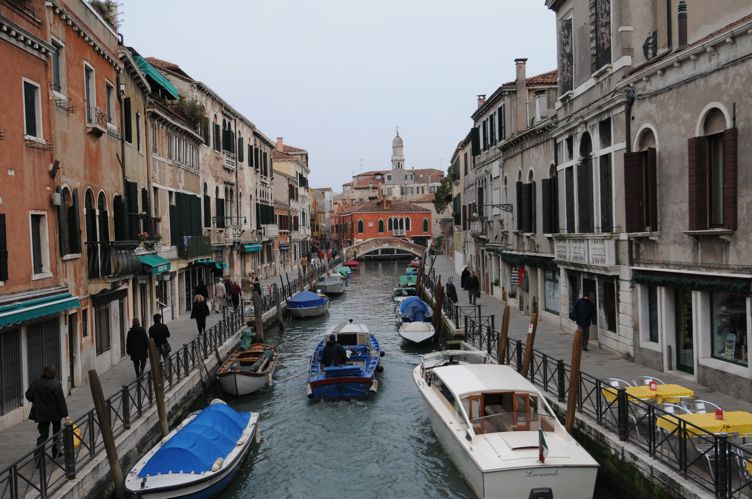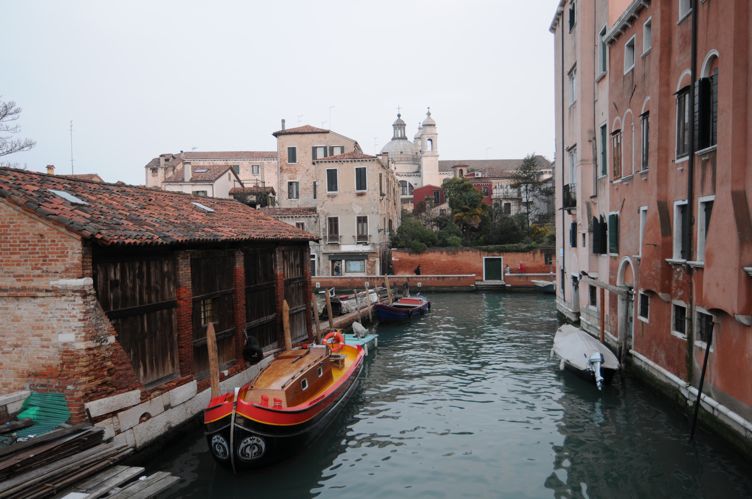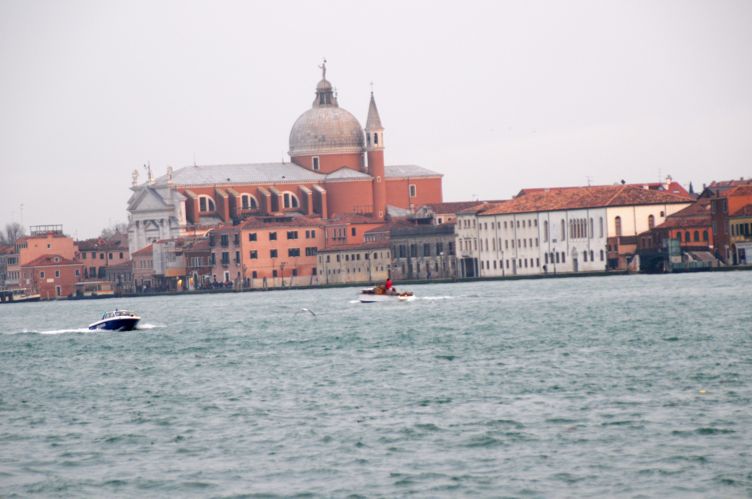Basilica San Marco and Doge’s Palace are the main attractions of Piazza San Marco and highlights of most visits to Venice. We visited the piazza on previous days, and today we will visit inside these two historic treasures. Neither allows photography inside, so we left the camera at the apartment and started walking toward the piazza.
Basilica San Marco was built in 11th century and blends Eastern and Western architectural and decorative styles. It is as beautiful inside as it is outside. The domes, walls and floor are covered in colorful mosaics, the 43,000 sq ft of it. The earliest mosaics date to 12th century. Even the arches above the doorways have notable mosaics and since they are outside we took an opportunity to photograph them.
The Palazzo Ducale (Doge’s Palace) was the seat of the Venetian government and official residence of its duke (doge). It holds much artwork and is itself an artwork. The outside appearance in white and pink marble dates mostly to 14th and early 15th century. The style is so different from anything else we’ve seen from this era. It was built as an opulent palace rather than a castle to showcase the wealth of the Venetian’s republic.
Many of the key rooms have intricately carved decorations covering the ceilings and beautiful tile work on the floors. The interior was decorated by leading Venetian artists of the 16th century, including Titian, Tintoretto, and Veronese.
It also houses an extensive prison which in no way resembles art. Since the 16th century the palace has been linked to the prison by the Bridge of Sighs.
After visiting the basilica and palace, we went back to the apartment for a little rest and a bite to eat. We then took the camera and resumed the walk about that we started yesterday. We crossed the Grand Canal and headed to San Polo and Dorsoduro, the “backbone”.
We visited the Frari’s basilica, Santa Maria Gloriosa dei Frari. This gothic church dates back to 14th and 15th century. It is the city’s second largest church and the burial place of some of its most famous citizens, including Titian. It’s filled with great paintings and sculpture.
The walk took us along quiet residential canals, we saw the second oldest church in Venice founded in 7th century, one of the last remaining active gondola yards at Campo San Trovaso, barge selling fruits and vegetables at Campo San Barnaba.
As the sun started to set we arrived at the Zattere. It was constructed in 1519 as a landing stage for timber from which it took its name. Today, Zattere is a beautiful waterfront promenade lined by several notable buildings and monuments and offering great views of Giudecca canal and Giudecca Island across it.
We passed by the train station on the way back to the apartment to get schedule for our side trips to Verona and Padua. We also purchased tickets for our trip to Milan on Friday, the sad reminder that our exciting week in Venice was going to end soon.

